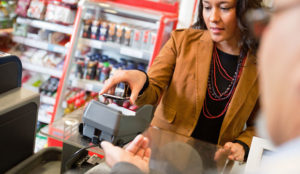It’s time to get strategic about winning over Gen Y.
Members of the millennial generation (or Generation Y) were born roughly between 1980 and 2000. They’re the largest age cohort in human history, making up about 25 percent of the entire global population.
When they’re mentioned in headlines, however, the news sounds bad for business: They’re broke. They’re self-obsessed. They’re not interested in your marketing strategy, and they’re definitely not buying your stuff.
The truth is far more nuanced than that, and far less apocalyptic. For starters, when you hear “millennials,” you should think “all adults under 40.” That’s a huge, and hugely diverse, group of people. Any broad generalizations about them should be taken with more than a grain of salt. So what do they want? What do they care about? How can you, as a brand, a marketer, or a merchant, get them on your side?
Here are three observations, based on current research, reporting, and my own 20-plus years of commerce experience, about how retailers and brands can use technology to make a meaningful connection with millennials.
After all, they’re only going to keep getting more and more important to the global economy — and most likely, to your business, too.
1. Prove Your Value
It’s no surprise that millennials are more cost-conscious than their parents; they’ve grown up amidst all kinds of economic and social disruption and uncertainty. As a group, they have more debt and less job security than older generations, and they’re less optimistic about their fiscal future.
In fact, according to one study, only 33 percent of millennials even own a credit card. That’s a major behavioral shift that your technology needs to address!
It’s clearly in your best interests to integrate creative and flexible payment options into your offerings. Accepting Visa, Mastercard, and PayPal alone isn’t going to cut it in the long term.
The same goes for loyalty programs. Whether you launch a points system for purchases and give store discounts or freebies as rewards, or offer an incentive for social posts with your store location tagged, a well-designed and -executed loyalty program can help keep millennials coming back.
Flexibility and tangible value are the keys here. Millennials want transparency into what they’re actually getting, and an easy way to see what they’ve earned. Being less future-oriented, they also tend to view smaller, more immediate rewards as more valuable than big-ticket prizes that take too long to achieve.
One other caveat before we move on: When we talk about “value,” that’s not a synonym for “lowest price.” Millennial shoppers have proven they’ll pay more for quality (or the perception of it) and durability. So if you can show why your product or service is actually worth more, you’ll find a receptive audience in Gen Y.
2. Make It Easy
Millennials are the first digital natives. They’ve grown up in a connected, always-on world. Half of them spend at least three hours per day on their smartphones, according to recent research, and a quarter spend more than five hours per day. So their expectations for digital experiences are high. Technology should just work, easily and always, across all channels.
That’s a challenge for those of us who create those experiences — but here’s the silver lining: Putting in the effort to meet millennials’ standards will pay dividends with the rest of your customers, too.
Gen Y may be the vanguard, but their Gen X and baby boomer parents, uncles, and grandparents aren’t far behind. Digital commerce needs to be fast, convenient, and frictionless, for all your customers.
At the same time, the state of the art in commerce technology is advancing exponentially. Trendy tech such as AI and AR/VR is entering the retail space at lightning speed. However, it’s not going to win over millennial customers if it’s only used as a toy or gimmick.
Millennials are savvy enough to pick up when they’re being pandered to. They expect new technology to do something useful for them, not just for the retailer. Technology should help customize and streamline the shopping experience — like intelligent, personalized recommendations based on past shopping, or augmented reality that makes it easy to find that stadium seat they just bought, or geolocation that senses when they’re in one of your stores and offers a deal.
3. Be Memorable, Consistently
Spending on experiences — e.g. events, travel, meals — rather than possessions makes millennials happiest. They’re wary of being weighed down by too much “stuff” and place more value on good memories than physical goods. They value connection, community, and authenticity more than ownership and status.
So what does that mean to, say, a fashion or electronics retailer that has actual inventory to sell? For one thing, you need to start thinking about how to make shopping for your products a deeper and more meaningful experience. If you want to resonate with this generation, buying can’t be a mere transaction.
Digital storefronts can and should offer rich, immersive content for shoppers. Brick-and-mortar stores can do the same, in the form of digital kiosks or signage, along with offering unique in-person experiences such as events, classes, and other get-togethers. Browsing your aisles — physical or digital — can be an opportunity to connect with other like-minded people, to explore a different lifestyle, to define and redefine one’s dreams and desires. It’s all part of offering the experiential lifestyle environment that millennials prefer.
It should go without saying that the experience you offer needs to be seamless across all touchpoints and channels. That starts with the nuts-and-bolts work of ensuring that your systems are all connected and integrated. Online, offline, mobile, in-store, email, advertising — everything needs to be synchronized so customers can engage with your brand (and buy your products) in their own time and their own preferred way.
As I mentioned, authenticity means a lot to millennials, and part of that is being careful to present a consistent brand experience. Yes, your brick-and-mortar store needs to have the same look and feel as your website and mobile app. But consistency means more than just putting your brand colors on everything, or putting up in-store signage with the same cheeky writing style as your ads.
You need to have a strong brand story that embodies values that younger adults care about. Demonstrating inclusivity, corporate responsibility, sustainability, and community-mindedness won’t guarantee success — but the opposite will likely lead to failure.
Got All That?
So, “all” you need to do is focus on demonstrating great value, offering absolute convenience, and creating seamless, memorable experiences? Hey, no one said this was going to be easy.
Still, considering the size and impact of the millennial generation, both present and future, the opportunity is immense — and it’s one you simply can’t afford to ignore.



















































Social Media
See all Social Media